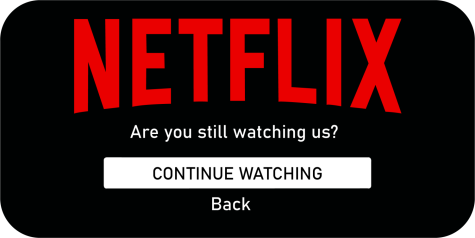Editorial: Are we saying ‘never mind’ to Netflix?
Feb 6, 2023

The landscape of streaming services has grown exponentially over the last few years. The playing field once dominated by Netflix is now a competition amongst services like Hulu, Disney+ and Amazon Prime Video.
In order to gain access to the diverse content across these platforms consumers are often left having to pay for more than one, which can become costly. A common solution to this is sharing passwords with friends and family to save on costs.
Password sharing, although frowned upon by streaming platforms like Netflix, aren’t necessarily restricted by rules. Netflix’s terms and conditions do state that users outside of a household must use their own account, but the terms also state that the streaming service will not charge extra for multiple users sharing the same account.
With this loophole, users have shared accounts for years. Netflix even said in March 2017 that “Love is sharing a password” in a tweet.
However, platforms are now finding ways to strike down and enforce restrictions on password sharing, including Netflix who reported more than 100 million of their 230 million subscribers share accounts.
More recently, Netflix announced they will begin blocking password sharing between users by April 2023, a large proponent of the decision being related to claims that sharing an account with more than one household disrupts the streaming service from securing deals with television networks and film companies.
Netflix has been working on a “paid sharing” protocol in Latin American countries. The paid sharing trial forces users to connect their viewing device to the WiFi in their home and the IP addresses with that specific account. This requires users to register if an account holder is paying for another person outside of the account holder’s home to access the service.
With Netflix still deciding what policies to enact in the future, measures like these beg the question of where consumers can expect the landscape of streaming services to shift.
June 2022 YouGov data revealed Netflix is already losing international subscriptions. According to the survey data, 16% of Netflix users in Finland and 12% in Denmark have canceled their subscriptions and are no longer Netflix patrons.
Many consumers dropped traditional cable services because streaming offered an appealing, cost-effective, on-demand viewing experience. However, keeping up with the range of selection and quality of content that traditional TV services offer means trying to balance multiple streaming subscriptions. This ends up rivaling the costs of traditional TV anyways.
Commercialism and competition between streaming services has led many consumers to feel trapped in their subscriptions. Many express multiple subscriptions aren’t worth the money, torn between losing entertainment content and being able to afford it.
The future for Netflix is hanging in the balance, where people are deciding if the costs, and now hurdles, are worth it.
With the number of streaming services increasing, platforms will only be able to be profitable if they commit to the customer experience rather than their own personal bottom line.





















